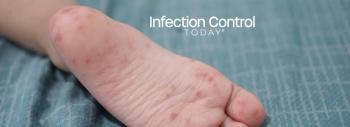
Contaminated Dish Cloths Pose Health Hazard
Research by the UK's Health Protection Agency (HPA) has revealed that more than half of the cleaning cloths used in restaurants and take-away kitchens were found to contain unsatisfactory levels of bacteria, which are a sign of poor hygiene and cross-contamination. The findings were presented in a poster presentation at the HPA's annual conference, Health Protection 2010, at the University of Warwick today.
Cloths used in kitchens need to be changed or disinfected frequently to stop bacteria growing which could cause food poisoning. Any breakdown in these procedures means that bacteria can be spread from the cloths to the hands of catering staff and then spread to work surfaces and equipment. Where kitchens prepare both raw and ready-to-eat foods, there should be separate cloths for both areas to reduce the risk of spread of bacteria.
The team sampled 133 cloths, from 120 establishments in the northeast of England, and found that 56 percent contained unacceptable levels of bacteria. The most common of which were Enterobacteriaceae (found on 86 cloths) E. coli (21 cloths), Staphylococcus aureus (six cloths) and Listeria (five cloths).
Although the recommended advice for restaurants is to use disposable cloths that are changed regularly, the study found that only one- third (32 percent) of the catering premises reviewed adhered to this. The remaining two-thirds (68 percent) used re-usable cloths and 15 percent were unsure as to how often these were replaced.
One of the most important factors in reducing the spread of bacteria around the kitchen is to separate cloths used for raw and ready-to-eat food areas but the research found that 24 cloths had been used between these two areas.
The researchers also found that there was no consistent approach to disinfection of re-usable cloths or in the method of disinfection. The majority disinfected their re-usable cloths every 10 to 24 hours but a number left it longer than 24 hours and some didn't know how often cloths were disinfected.
Dr. John Piggott, the lead author from the HPA's Food, Water and Environmental Microbiology laboratory in Leeds, says, "It's of concern that despite recommendations to use disposable cloths the majority of restaurants we surveyed were re-using cleaning cloths and some were unaware how often they changed them. Although many disinfected their cloths using bleach or other disinfectants, soaking does not remove the food on which the bacteria grow. The disinfectant qualities of bleach do wear off after a period of time so soaking large amounts of cloths together can result in bacteria contaminating more cloths and creating more potential problems. All of the premises in our study were given advice on how to practice better hygiene and they will be revisited to make sure that procedures have improved."
"This interesting study looked at a small number of premises, but the findings indicate problems with poor hygiene practices at some of these establishments," says Dr. Paul Cosford, executive director of health protection services at HPA. "Exposure to this harmful bacteria can cause food poisoning which is unpleasant for most people but for some - particularly the very young, very old and pregnant women - it can have serious consequences. The HPA plays an important role in monitoring the hygiene standards at commercial premises and these worrying findings should serve as a timely reminder to all caterers to dish the dirty dish cloths and stick to disposable ones."
Newsletter
Stay prepared and protected with Infection Control Today's newsletter, delivering essential updates, best practices, and expert insights for infection preventionists.





